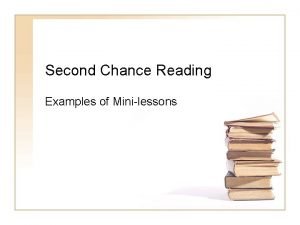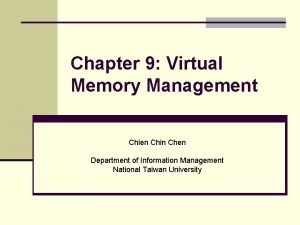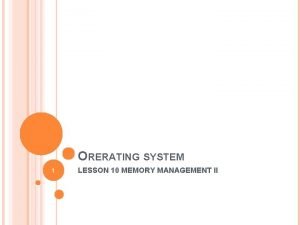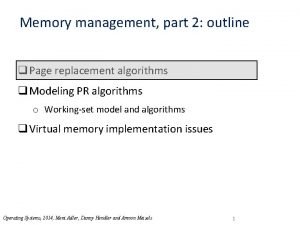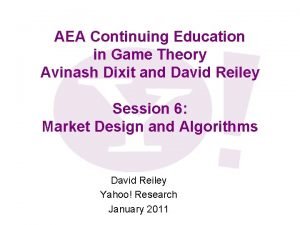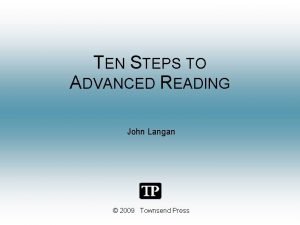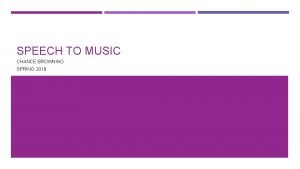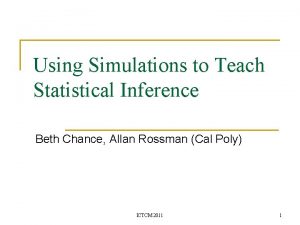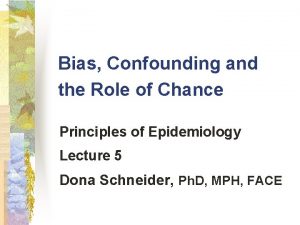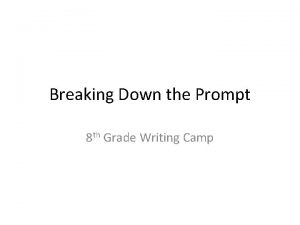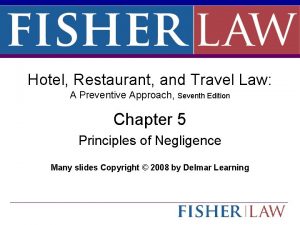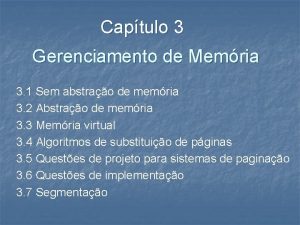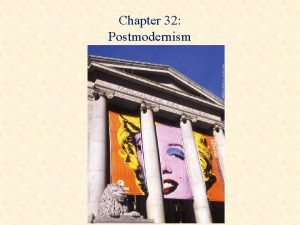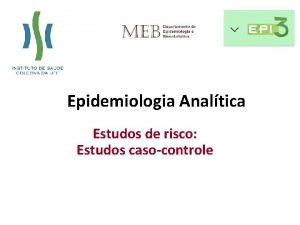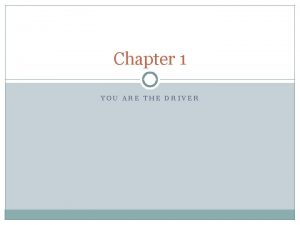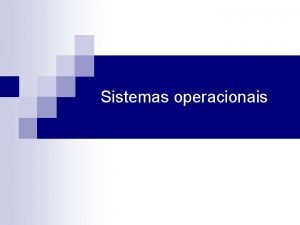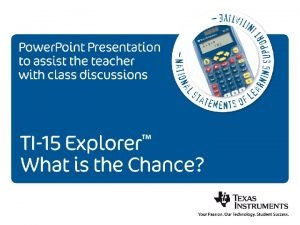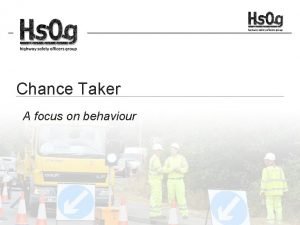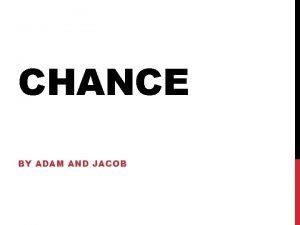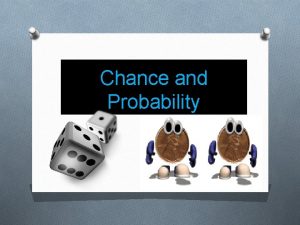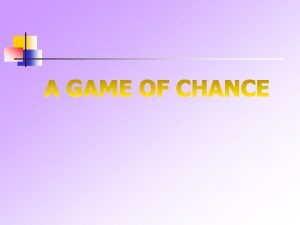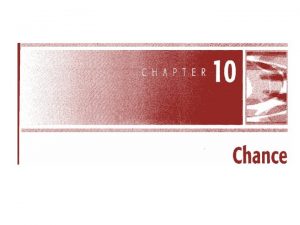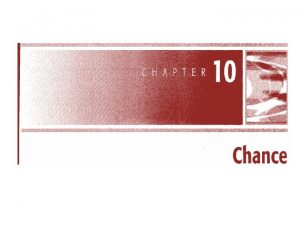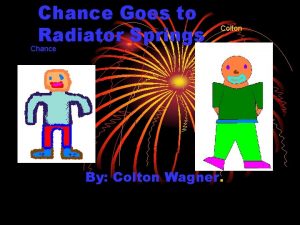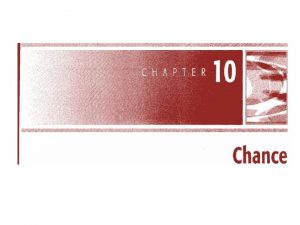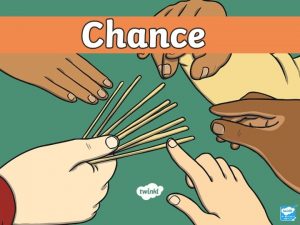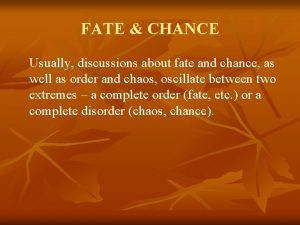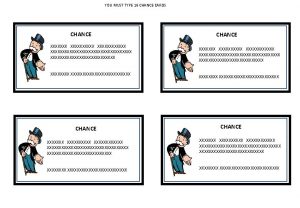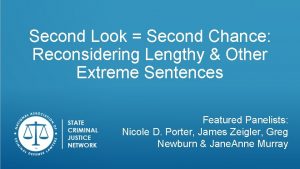AEA 9 Second Chance Reading 2007 2008 Second











































- Slides: 43

AEA 9 Second Chance Reading 2007 -2008 Second Chance Reading Developed by Beverly Showers

SCR Objectives Second Chance Reading l l To learn the instructional strategies and management procedures of Second Chance Reading sufficiently to begin immediate implementation in classrooms; To understand how Second Chance Reading fits into the context of the Iowa Professional Development Model and your district’s Career Development Plan; and

SCR “Second Chance” Reading Purpose l l Rapidly improve comprehension and fluency for secondary students reading two or more years below grade level Prepare students for secondary academic work

SCR Results Data: see Handout

SCR Other “Second Chance” Results Des Moines Public Schools 4 high schools, 9 middle schools, 3 alternative schools l l Mean Growth (regular ed) Mean Growth (mainstreamed Sp. Ed) Mean Growth (Low SES) Mean Growth (self-contained Sp. Ed) 2. 1 GLE (SDRT) 1. 9 GLE (SDRT) 2. 0 GLE (SDRT) . 9 GLE (SDRT)

SCR Implementations l l l l North Scott Sr and Jr High Columbus Junction MS Muscatine High Durant Jr High Des Moines (MS & HS) Wapello Jr High Winfield-Mt. Union West Burlington 2. 0/yr 1. 0/yr 3. 0/yr 1. 0/yr

SCR Research Base l Researched Strategies – Think Aloud – Inductive Thinking – Graphic Organizers – Questioning Strategies

SCR Researched strategies cont. l l l Cooperative Learning (primarily pairs) Vocabulary (mixture of definitional and contextual, mnemonic, practice methods) Fluency (specific, targeted strategies have positive effects; “Round Robin” has negative effects)

SCR Advocated by Reading Experts l l l Extensive Independent Reading (IRA, NAEP, Reading Next) Self-selection, variety of high interest reading materials (Moore, Balfanz, Allen, Codding) Mini-lessons on skills (Codding, Pressley, Sinatra)

SCR Advocated. . . Cont. l l l Cooperative Learning (Balfanz, Moore, Kucan & Beck) Think Alouds (Balfanz, Moore, Kucan & Beck) Specific classes for secondary struggling readers (Balfanz, Moore)

SCR Teaching Strategies l l l l l Numbered Heads Together Cooperative Comprehension Dictated Writing Inductive Thinking Graphic Organizers Round Table Pair Share Skills/Fluency Teacher – – – Book Talks Diagnosis Timed Tests Student – – Independent Reading Comprehension and Fluency

Weekly Structure - Second Chance Reading Monday Tuesday Wednesday Thursday Friday Independent Reading* (1520 minutes) Pair Share* with generic questions (5 -10 minutes) Vocabulary for Read Aloud (15 -20 minutes) Read Aloud (model comprehension strategies and ask questions of pairs) – (15 -25 minutes) Comprehension Activity (Coop Comprehension, Dictated Writing or Inductive Thinking, etc. ) – (20 -35 minutes) Independent Reading* (1520 minutes) Pair Share* with generic questions (5 -10 minutes) Reading Skill Lesson (context clues, fluency drills, etc. ) – (20 minutes) Independent Reading* (1520 minutes) Individual Vocabulary Cards* (10 -15 minutes) Vocabulary Pairs* (10 -15 minutes) Independent Reading* (1520 minutes) Vocabulary Pairs* Vocabulary tests [Bi-weekly fluency tests] *Opportunity for teacher to work with individual students: Book talks, vocabulary tests, oral reading, etc.

SCR Read/Think Aloud for… l Modeling of comprehension strategies, especially engaging with author to determine meaning l Modeling the use of prior knowledge and making connections l Modeling fluency l Increasing student engagement with comprehension tasks

SCR Read/Think Aloud Process Overview 1. 2. 3. 4. Select a reading selection that is interesting, complex and difficult for students. Organize students into pairs. Read the selection, stopping at critical points to model comprehension strategies. Pose questions about selection to pairs to provide immediate practice in using modeled comprehension strategies.

SCR Think Aloud: Examples of Modeling l l l Making connections to prior knowledge Inferring Predicting Summarizing Clarifying word meanings

SCR Think Aloud Video Demonstration

SCR Numbered Heads Together for… l Vocabulary Meaning l Checking for Understanding l On-task Behavior, Individual Accountability

SCR Numbered Heads Together Process Overview 1. 2. 3. Pronounce and define words for entire class. Organize students for peer tutoring (pairs), first modeling the strategies you want them to use as they teach other. Test mastery of the material learned using the “Numbered Heads Drill”

SCR Numbered Heads Together Video Demonstration

SCR Cooperative Comprehension for… l l Reading Comprehension: Lower Order and Higher Order Increased student engagement with task

SCR Cooperative Comprehension Process Overview 1. 2. 3. Choose reading selection. Design three to five comprehension questions, ranging from easy to difficult. The last question should measure your higher-order comprehension objective. Organize students into pairs. The teacher reads the selection or students read it silently. Debrief team answers with the entire class using the “Numbered Heads” drill.

SCR Dictated Writing for… l l Higher order comprehension Modeling of writing process

SCR Dictated Writing Process Overview 1. 2. 3. After the Read/Think Aloud of the selection, elicit from students what they remember about critical categories. Record their comments for all to use. Present the prompt for the first paragraph to pairs. All pairs construct one sentence they want to include in the first paragraph and record it on a sentence strip. * As all students display their first sentence, the teacher assists the class in constructing the first paragraph and determining if it needs a summary sentence.

SCR Dictated Writing Process Overview 4. 5. 6. Proceed with the second and third paragraph starters in the same manner. Read through the finished product together, editing for meaning. Students copy the finished product or one student may enter it on a word processor so all students have copies for their folders. *Paragraphs composed of sentences on sentence strips can be posted on the wall or board with tape or displayed in a pocket chart.

SCR Round Table for… l Comprehension: Recall of Factual Information l Practice of skills l Student engagement with non-fiction text

SCR Round Table Process Overview l l l Organize students into pairs; provide one piece of paper for each pair. Read article or story to students. Recall task is timed. When reading is paused, students pass paper back and forth, alternating the writing of one fact they remember from the reading. When time is called after the final note taking, teams count the number of items they remembered. While teacher records, teams share one item at a time until all items are reported.

SCR Inductive Thinking for… l Identifying main ideas or central themes l Concept Learning l Development of critical thinking skills l Increased student engagement with task

SCR Inductive Thinking Process Overview l l l Identify concepts (categories or main ideas) in subject matter. Create a data set that includes five to seven examples of each concept or category to be taught. There are usually two to four categories in a data set. Students work with partners to categorize the data set by forming groups with items sharing common attributes. Students then summarize or name their categories.

SCR Inductive Thinking Process Overview (continued) l l Students report their categories (and their identifying attributes) to the entire class. Students apply the categories they have formed in new tasks. For our uses of Inductive Thinking, that usually means summarizing the author’s message or interpreting a reading selection.

SCR Management of Second Chance Reading l Classroom Setup – Library (organization and checkout system – Wall chart (track amount of student reading) – Reading folders (in crates with hanging files) – Vocabulary boxes, index cards, post-its

SCR Management of Second Chance Reading l Student Responsibility – – – – Book Selection (appropriate level) Record Keeping (reading folders) Book Log Vocabulary Tests Fluency/Comprehension Tests Book Summaries/Evaluations Vocabulary Boxes

SCR Book Talk Video Demonstration

SCR Management of Second Chance Reading l l Teacher Individual Work Book Talks (records: wall chart, reading folder) Vocabulary Testing Oral Reading (diagnostic reading levels)

SCR Suggested Sequence: Teaching SCR to Students l l l l Library Organization and Use: Selecting a book and recording it in reading folder Independent Reading: Pair share Numbered Heads Together; Vocabulary Cards; Vocabulary Box Think Aloud; Cooperative Comprehension Readers Theater (fluency skills) Individual Vocabulary Cards; Vocabulary Pairs; Fluency Tests Book Talks

SCR Suggested Sequence: Teaching SCR to Students (continued) l Stanford Diagnostic Reading Test – – Scheduled vocabulary test for one day Comprehension test for another day during the second week of school

SCR Weekly Structure - Second Chance Reading Monday Tuesday Wednesday Thursday Friday Independent Reading* (1520 minutes) Pair Share* with generic questions (5 -10 minutes) Vocabulary for Read Aloud (15 -20 minutes) Read Aloud (model comprehension strategies and ask questions of pairs) – (15 -25 minutes) Comprehension Activity (Coop Comprehension, Dictated Writing or Inductive Thinking, etc. ) – (20 -35 minutes) Independent Reading* (1520 minutes) Pair Share* with generic questions (5 -10 minutes) Reading Skill Lesson (context clues, fluency drills, etc. ) – (20 minutes) Independent Reading* (1520 minutes) Individual Vocabulary Cards* (10 -15 minutes) Vocabulary Pairs* (10 -15 minutes) Independent Reading* (1520 minutes) Vocabulary Pairs* Vocabulary tests [Bi-weekly fluency tests] *Opportunity for teacher to work with individual students: Book talks, vocabulary tests, oral reading, etc.

SCR Stanford Diagnostic Reading Test Materials l l l l Student Booklets Grade 6 & 7 – Purple Forms J & K Grade 8+ – Brown Forms J & K Answer Sheets (hand scorable) Directions for administering (in packages of student booklets Norms Booklets (Fall and Spring) Scoring Stencils for Forms J & K, Purple & Brown

SCR Stanford Diagnostic Reading Test Administration l l l Vocabulary and Comprehension ONLY Monitoring (follow ITBS/ITED) Data Entry (web site)

SCR Information on Jamestown Publishers Timed Readings l In SCR we use the Jamestown Timed Reading and the Timed Readings in Literature to check fluency and comprehension every two weeks

SCR “Second Chance” Agreements Teachers – – Name: School: Attend all “Second Chance” training sessions Implement with fidelity Collaborative planning and development Data collection (including facilitation of data collection by students) Date: District: __________

SCR Second Chance Agreements l Administrators – Schedule common planning time for teachers – Commit financial resources for training, classroom libraries, and other instructional materials – Assist with data collection – Principals attend training with teachers

SCR In addition to the 3 training days there are 4 Follow-up Days, containing the following: l l 1 – Review, answer questions, develop, add Round Table, share 2 – Begin Inductive Thinking, review, answer questions, share and develop 3 – Continue Inductive Thinking, review, answer questions, share and develop 4 – Graphic Organizers, review, develop, answer questions and share

SCR Any questions? Contact: Janet Stos at 563 -344 -6392 Or email at : jstos@aea 9. k 12. ia. us Deadline for 2007 -2008 SCR enrollment is: May 15, 2007
 Second chance reading
Second chance reading 2008 2008
2008 2008 Second chance quiz answers
Second chance quiz answers Second chance page replacement algorithm
Second chance page replacement algorithm Clock sweep algorithm
Clock sweep algorithm Second chance school
Second chance school Second chance page replacement algorithm
Second chance page replacement algorithm You never get second chance make first impression
You never get second chance make first impression Second chance page replacement algorithm
Second chance page replacement algorithm Pre reading while reading and post reading activities
Pre reading while reading and post reading activities Aea
Aea Joe aea listings
Joe aea listings Grille aea
Grille aea Falsos hermanos
Falsos hermanos Joe listings
Joe listings Aea continuing education
Aea continuing education Aea 90364
Aea 90364 27 miles per gallon into kilometers per liter
27 miles per gallon into kilometers per liter Ten steps to advanced reading 2nd edition answers
Ten steps to advanced reading 2nd edition answers Alexander chance browning
Alexander chance browning Give kids a chance
Give kids a chance One chance to get it right
One chance to get it right You only have one chance to make a first impression
You only have one chance to make a first impression Beth chance cal poly
Beth chance cal poly Misclassification bias
Misclassification bias Breaking down a prompt
Breaking down a prompt Lnc cergy
Lnc cergy Last clear chance doctrine
Last clear chance doctrine Segunda chance
Segunda chance Quelle chance tu as
Quelle chance tu as John cage is the proponent of chance music
John cage is the proponent of chance music Taking a chance essay
Taking a chance essay One chance to get it right
One chance to get it right Fractura tipo chance
Fractura tipo chance Calcular odds ratio
Calcular odds ratio Chapter 1 you are the driver pdf
Chapter 1 you are the driver pdf Segunda chance
Segunda chance Chance brothers
Chance brothers Chance words
Chance words Checked jacob chance vk
Checked jacob chance vk Acorda pra vida tem um dia lá fora
Acorda pra vida tem um dia lá fora Even chance examples
Even chance examples Beth chance
Beth chance Vanessa fat chance
Vanessa fat chance
